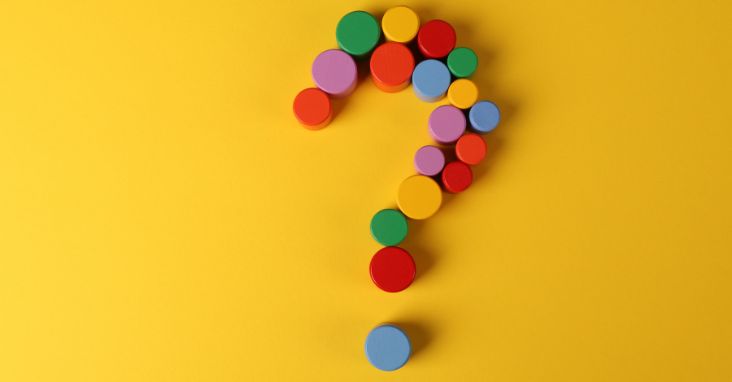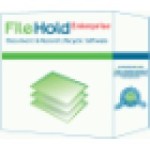Welcome to our guide on mastering note-taking! Whether you’re a student, a professional, or someone who loves to learn, good note taking take-taking is a crucial skill that can enhance your understanding, retention, and organization of information.
Note-taking enhances memory retention, promotes active learning, and serves as a personalized review tool. Techniques vary from traditional methods like Cornell, Outlining, to digital sketchnotes. It requires comprehension, condensation, and review, leading to lifelong learning and growth.
In this article, we’ll explore different note-taking methods, the benefits of leveraging technology, and practical strategies to improve your note-taking game.
Key points:
Note-taking is a valuable skill that aids understanding and retention of information.
This guide will cover various note-taking methods, technology tools, and strategies.
Traditional Note-Taking Methods
When it comes to note-taking, traditional methods have stood the test of time. Let’s explore a few tried-and-true techniques that have helped learners for generations.
1. Outlining method
The outlining method involves structuring your notes in a hierarchical manner, using headings, subheadings, and bullet points. Start with the main topic and branch out into supporting details main concepts and subtopics. This method helps you see the relationships between ideas and organize information systematically.
2. Mind mapping technique
Mind mapping is a visual note-taking technique that allows you to create a diagram representing different key ideas, and their connections. Begin with a central concept or topic and branch out with related subtopics or key points. Mind maps are especially useful for brainstorming, organizing complex information, and visual thinkers.
3. Cornell note-taking system
The Cornell note-taking system is a structured approach effective notes that divides your note page into sections: a narrow left column for cues or questions, a wider right section for main notes, and a summary section at the bottom. This method encourages active engagement during lectures or readings and provides a concise summary for quick review.
4. Summarizing and paraphrasing
Summarizing and paraphrasing involve condensing information into your own words. By capturing the essence of the content, you can distill complex new ideas into concise and understandable notes. This method encourages active processing of information and reinforces understanding.
Key points:
Traditional note-taking methods include outlining, mind mapping, Cornell note-taking, and summarizing.
Each method offers a unique approach to organizing and structuring information effectively.
In the next section, where we’ll dive into how technology can revolutionize your note-taking experience.

Leveraging Digital Tools for Note-Taking
In today’s digital age, technology offers a plethora of tools and apps that can revolutionize the way you take notes. Let’s explore some of the ways you can leverage digital tools to enhance your note-taking experience.
Note-Taking Apps
Note-taking apps have become popular for their versatility and convenience. Here are a few noteworthy apps:
Evernote: A feature-rich app that allows you to create, organize, and synchronize notes across multiple devices. It supports multimedia elements and offers powerful search functionality.
Microsoft OneNote: A digital notebook that lets you capture and organize your notes, drawings, and files. It provides a flexible canvas and integrates well with other Microsoft Office tools.
Google Keep: A simple and intuitive app for capturing notes, creating to-do lists, and setting reminders. It seamlessly integrates with other Google services.
Notion: A powerful all-in-one workspace that combines note-taking, project management, and collaboration features. It offers customizable templates and allows you to create a personalized note-taking system.
Voice Recording Apps
Sometimes, capturing audio alongside your notes can be beneficial, especially during lectures or meetings. Consider these voice recording apps:
Voice Recorder: Available for Windows devices, it provides a straightforward recording interface and allows you to save and organize your audio files.
Voice Memos: A built-in app for iOS devices that lets you record and manage voice memos conveniently. It syncs with iCloud for easy access across your Apple devices.
Voice Recorder & Audio Editor: An Android app that offers recording features, as well as the ability to edit and enhance your audio files.
Smart Pens
Smart pens combine the convenience of traditional writing with digital capabilities. These pens can digitize your handwritten notes and sync them with your devices. Examples include:
Livescribe: Known for its innovative pens that capture your writing and record audio simultaneously. It allows you to tap on your notes to replay the corresponding audio.
Wacom Bamboo Ink: A smart stylus that enables you to write on paper or compatible digital devices. It seamlessly transfers your notes to your device for easy organization and retrieval.
Scanning Apps and OCR Software
Scanning apps and Optical Character Recognition (OCR) software can help digitize handwritten notes or printed materials. Consider these options:
Adobe Scan: An app that transforms your smartphone into a portable scanner, allowing you to capture and enhance your documents or notes.
Microsoft Office Lens: An app that trims, enhances, and makes your scanned documents readable. It integrates with Microsoft Office applications for seamless sharing.
CamScanner: An app that scans, crops, and enhances documents using your smartphone camera. It also offers OCR capabilities to extract text from images.
These digital tools can enhance your note-taking experience, providing features like organization, searchability, and synchronization good notes take across devices.
Now lets take a look at the practical strategies for effective note-taking.

Strategies for Effective Note-Taking
Taking notes is more than just jotting down information—it’s about actively listening, engaging with the material and creating a valuable resource for future reference. Here are some practical strategies to help you improve your note-taking skills.
1. Active Listening and Engagement
Stay attentive during lectures, meetings, or readings.
Focus on understanding the main ideas and key concepts.
Ask questions and participate in discussions to enhance your comprehension.
Take note of verbal cues or emphasis from the speaker.
2. Structuring Your Notes
Use headings, subheadings, and bullet points to organize information hierarchically.
Highlight or underline important points for emphasis.
Create visual cues or symbols to represent relationships between ideas.
Leave space for additional comments or reflections.
3. Abbreviations and Symbols
Develop a set of abbreviations and symbols that make note-taking more efficient.
Use shorthand or acronyms for common terms or phrases.
Employ arrows, stars, or exclamation marks to denote significance or relevance.
4. Active Summarization
Summarize the main points in your own words.
Paraphrase complex ideas to reinforce your understanding.
Use concise language to capture the essence of the content.
Focus on the key takeaways rather than attempting to transcribe everything.
5. Review and Revision
Regularly review your notes to reinforce your learning.
Fill in any gaps or clarify unclear points.
Use different techniques to review, such as flashcards or self-quizzing.
Make connections between different topics or concepts.
6. Personalization and Elaboration
Add your own examples or insights to connect with the material.
Relate the content to real-life situations or personal experiences.
Elaborate on key points to deepen your understanding.
Make your notes unique and meaningful to you.
7. Experiment and Adapt
Explore different note-taking methods and find what works best for you.
Adjust your approach based on the subject matter or learning environment.
Incorporate technology tools and techniques that enhance your note-taking process.
Continually evaluate and refine your note-taking strategies.
By applying these strategies, you can make your note-taking more effective, engaging, and personalized to your learning style.
In the next section, we’ll discuss ways to enhance engagement and retention in your class material and note-taking process.
Key points:
Actively engage by listening attentively, participating, and asking questions.
Structure notes with headings, bullet points, and visual cues.
Use abbreviations, symbols, and concise language for efficiency.
Summarize in your own words and review notes regularly.
Personalize your notes with examples and elaboration.
Experiment with different methods and adapt based on your needs.

Enhancing Engagement and Retention in Note-Taking
Taking notes doesn’t have to be a mundane task. By incorporating strategies to enhance engagement and retention, you can make your note-taking experience more enjoyable and effective. Let’s explore some techniques to achieve this.
1. Visual Elements
Incorporate visual elements like diagrams, charts, or illustrations in your notes.
Visual representations can help you grasp complex ideas and make connections between different concepts.
Use colors, arrows, and symbols to highlight important information and create visual cues.
2. Annotations and Sticky Notes
Add annotations or comments alongside your notes to provide additional context or insights.
Sticky notes can be used to write down questions, reminders, or points requiring further exploration.
These annotations and sticky notes serve as prompts for deeper engagement and reflection during review sessions.
3. Mnemonic Devices
Create mnemonic devices to aid memory and recall.
Use acronyms, rhymes, or visual associations to remember complex information.
Mnemonic devices make your notes more memorable and facilitate easier retrieval of key concepts.
4. Real-Life Connections
Relate the content to real-life examples or personal experiences.
Making connections between the material and your own life enhances understanding and retention.
Forming these connections helps you see the practical applications and relevance of the information.
5. Digital Whiteboards and Collaborative Note-Taking
Utilize digital whiteboards or collaborative note-taking platforms for group projects or brainstorming sessions.
These tools allow multiple participants to contribute simultaneously, fostering collective learning and idea sharing.
Engaging in collaborative note-taking promotes active discussion and a deeper understanding of the material.
Remember, note-taking is a personalized process, and finding techniques that resonate with you will enhance your engagement and retention of important concepts and information.
In the next section, we’ll discuss the importance of striking a balance between traditional and digital note-taking approaches.
Key points:
Incorporate visual elements like diagrams and illustrations in your notes.
Use annotations and sticky notes for additional context and reminders.
Create mnemonic devices to aid memory and recall.
Relate the content to real-life examples or personal experiences.
Engage in collaborative note-taking for group projects or brainstorming.

Striking a Balance: Traditional and Digital Note-Taking Approaches
In today’s digital era, traditional and digital note-taking approaches each have their own advantages. It’s important to find a balance that works for you and maximizes your note-taking effectiveness. Let’s explore the benefits of both methods and how they can complement each other.
Benefits of Traditional Note-Taking
Active Engagement: Writing notes by hand enhances active engagement with the material, as it requires cognitive processing and fine motor skills.
Personalization: Handwritten notes allow for personalization through unique writing styles, drawings, and annotations.
Memory and Comprehension: Research suggests that handwriting notes can improve memory retention and comprehension of the material.
Flexibility: Traditional notes are accessible without the need for technology or devices, making them convenient in various settings.
Benefits of Digital Note-Taking
Organization and Searchability: Digital note-taking tools offer easy organization and search functions, allowing for quick retrieval of specific information.
Versatility: Digital notes can incorporate multimedia elements, such as images, audio, and videos, enhancing the richness and variety of your notes.
Collaboration: Digital platforms enable seamless collaboration and sharing of notes with others, promoting group learning and knowledge exchange.
Backup and Accessibility: Digital notes can be easily backed up and accessed across devices, ensuring you don’t lose your valuable information.
Striking a Balance
To optimize your note-taking experience, consider a hybrid approach that combines the strengths of both traditional and digital methods:
Combine Handwriting with Digital Tools: Take handwritten notes during lectures or when brainstorming ideas. Later, digitize them using scanning apps or smart pens for easier organization and searchability.
Use Digital Tools for Multimedia and Organization: Leverage digital note-taking apps to incorporate multimedia elements, create visual representations, and organize your notes effectively.
Experiment and Adapt: Find the right balance that suits your learning style and the specific context. Some subjects or situations may lend themselves more to traditional note-taking, while others may benefit from digital tools.
Regular Review and Revision: Regardless of the format, ensure you review and revise your notes regularly to reinforce learning and maintain a solid knowledge base.
By embracing both traditional and digital approaches, you can create a dynamic and adaptable class note-taking system that meets your needs and enhances your learning experience.
In the concluding section, we’ll recap the importance of note-taking and the role of technology in this process.
Key points:
Traditional note-taking offers active engagement, personalization, and cognitive benefits.
Digital note-taking provides organization, searchability, versatility, and collaboration advantages.
Find a balance that combines the strengths of both methods.
Experiment, adapt, and use the appropriate approach based on the context.
Regular review and revision are crucial for effective note-taking, regardless of the format.

Conclusion
Note-taking is a valuable skill that empowers students and you to actively engage with information, enhance understanding, and improve knowledge retention.
Throughout this guide, we’ve explored various note-taking methods, the benefits of leveraging technology, and practical strategies to elevate your note-taking game.
Traditional note-taking methods, such as outlining, mind mapping, and summarizing, offer effective ways to structure and organize information.
They promote active engagement, personalization, and cognitive benefits. On the other hand, digital tools provide enhanced organization, searchability, collaboration, and multimedia capabilities, making note-taking more versatile and accessible.
Striking a balance between traditional and digital note-taking approaches allows you to leverage the strengths of each method.
You can enjoy the tactile experience and personalization of handwritten class notes, while utilizing digital tools for organization, multimedia integration, and collaboration. The key is to find a hybrid approach that suits your learning style and the specific context.
Remember, effective note-taking is not just about the tools or techniques you use. It’s about active listening, structuring your own notes, personalizing them, and regularly reviewing and revising. By experimenting, adapting, and refining your note-taking process, you’ll discover what works best for you and enhance your learning journey.
So, embrace the art of note-taking, embrace the power of technology, and make your notes come alive. The knowledge you acquire from great notes and the insights you capture through note-taking will empower you in your educational pursuits, professional endeavors, and personal growth.
Happy note-taking!

Note Taking – FAQ
What are the benefits of taking notes?
Taking notes enhances understanding and retention of information.
Notes serve as a reference for future review and revision.
Note-taking promotes active engagement and participation during lectures or readings.
Well-organized notes facilitate efficient studying and exam preparation.
Notes can be personalized with examples and insights, aiding comprehension and connecting concepts.
How does taking notes help me learn?
Taking notes requires active listening and processing, which enhances comprehension.
Writing down information reinforces memory and helps in knowledge retention.
The act of summarizing and condensing information promotes deeper understanding.
Reviewing notes regularly reinforces learning and strengthens long-term memory.
Note taking forces you to pay attention and helps you focus.
What are some effective note-taking strategies?
Actively listen and engage during lectures or readings.
Use headings, bullet points, and visual cues to structure your notes.
Summarize information in your own words.
Personalize your notes with examples and connections.
Regularly review and revise your notes for reinforcement.
What are the different types of notes?
Outline notes: Using headings and subheadings to structure information hierarchically.
Mind maps: Visual diagrams representing connections between ideas.
Cornell notes: A structured system with sections for cues, main notes, and summaries.
Summaries: Condensing information into key points and main ideas.
How do I choose the best note-taking method for me?
Experiment with different methods to find what works best for you.
Consider your learning style, the subject matter, and the context.
Adapt and combine different techniques to create a personalized approach.
How can I take notes more efficiently?
Develop abbreviations and symbols to speed up your note-taking process.
Practice active listening to capture key points effectively.
Use technology tools like voice recording apps or smart pens to streamline the process.
How can I stay organized when taking notes?
Use a consistent structure for your notes, such as headings and subheadings.
Utilize digital note-taking apps with features like folders and tags.
Create a naming or labeling system to categorize and find your notes easily.
How can I review my notes effectively?
Set aside dedicated time for regular review and revision.
Summarize your notes and create flashcards or practice quizzes for active recall.
Look for connections and patterns between different concepts or topics.
How can I use my notes to study for exams?
Review your notes regularly leading up to the exam.
Create summary sheets or study guides based on your notes.
Practice answering questions or solving problems using your notes as a reference.
How can I use my notes to collaborate with others?
Share your notes digitally through collaborative platforms or note-taking apps.
Use digital whiteboards for group brainstorming sessions and note-taking.
Discuss and compare notes with others to enhance understanding and exchange ideas.
How can I use my notes to prepare for presentations?
Create an outline or storyboard using your notes as a starting point.
Highlight key points and supporting details for effective communication.
Practice your presentation using your notes as a guide.
How can I use my notes to keep track of my progress?
Use your notes to document milestones, achievements, or lessons learned.
Reflect on your progress regularly and add personal insights or reflections to your notes.
Set goals and track your progress by updating your notes with new information or accomplishments.
How can I use my notes to stay motivated?
Include motivational quotes, affirmations, or reminders in your notes.
Document your goals, aspirations, or reasons for pursuing your studies or projects.
Use your notes as a visual representation of your progress and accomplishments.
How can I share my notes with others?
Utilize digital note-taking apps with collaboration features to share your notes.
Export your notes as PDF or document files to send via email or messaging platforms.
Consider creating study groups or note-sharing communities to exchange and receive notes.
How can I protect my notes from loss or damage?
Backup your digital notes regularly using cloud storage or external hard drives.
Keep physical copies of your notes in a safe and secure location.
Make use of note-taking apps that offer synchronization and automatic backup features.
What are the different tools and resources that can help me take notes?
Note-taking apps like Evernote, OneNote, or Google Keep.
Voice recording apps for capturing audio notes.
Smart pens that digitize handwritten notes.
Scanning apps and OCR software to convert physical notes into digital format.
Digital whiteboards for collaborative note-taking and brainstorming.
What are the common mistakes that people make when taking notes?
Trying to write down every word instead of summarizing key points.
Being passive listeners instead of actively engaging with the material.
Lack of organization, resulting in difficulty finding or reviewing notes.
Not reviewing or revising notes regularly, leading to poor retention of information.
How can I overcome these common mistakes?
Practice selective listening and focus on capturing key points.
Engage with the material by asking questions and seeking clarification.
Develop a consistent note-taking system and structure.
Set aside dedicated time for regular note review and revision.
What are the benefits of taking notes in different settings?
In academic settings, notes help you retain information, study for exams, and track progress.
In professional settings, notes aid in capturing meeting discussions, action items, and project details.
In personal development, notes can document insights, goals, and reflections for self-improvement.
How can I incorporate note-taking into my everyday life?
Carry a notebook or use a note-taking app to jot down ideas, observations, or inspirations.
Take notes during conferences, workshops, or online courses to maximize learning.
Use notes as a tool for brainstorming, planning, or organizing tasks and projects.












